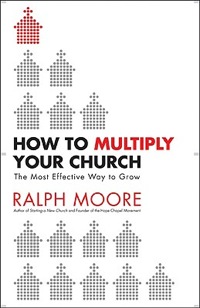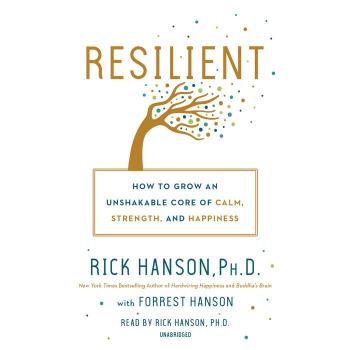
The author, Ralph Moore used the metaphor of the American forces during Word War II in 1942 to explain the need for church multiplication. Just as those soldiers needed to make a paradigm shift to win the war, the church today has to make a paradigm shift – from growth by addition to growth by multiplication. The primary insight from this book is the fact that churches should grow by multiplication and not just by addition. As this student was reading the book, one was enlightened by the fact the Bible does teach multiplication through conversion growth (80). There is more than one way to grow a church. The best way Ralph Moore contends is to multiply the church. The biblical insight that the apostles never left Jerusalem and that it took persecution to get other disciples to go and multiply God’s kingdom is astounding. The church today is really no different now than at the time of the apostles. The apostles were very much like us. They were involved in a new church. When Jesus told them to go, they did not do it voluntarily. God had to send persecution to make them do it. Even then, apostles stayed. That is an astounding claim. The apostles stayed and it took other people to multiply the church (81). God clearly showed the apostles that they were disobedient and that it was His will (just as Jesus said in Acts 1:8) to take the Gospel out to the world. This shows that church tradition can set in so quickly that a church may even resist the idea that multiplication is God’s will. This reviewer also believes that this is one of the reasons that the Gospel was transferred to the Gentiles. The Jewish apostles were resistant to do God’s will and it took people willing to reach Gentiles to accomplish it. God used multiplication to spread the Gospel to the entire Roman world. If the church would understand that truth today, we would spend less time trying to build bigger buildings and spend more time trying to start new churches.
Another insight was the natural need for a church to multiply. The Bible says to “be fruitful and multiply.” As part of being a fruitful church, it must multiply itself. This is necessary because the church goes through a life cycle (49-52). A church is (1) conceived and born, goes through (2) childhood and adolescence, (3) begins to reproduce and rear children, (4) enters middle age and empty nesting, and finally (5) decline and death. For a church to survive, it must multiply.
Moore shares a variety of metaphors to emphasize the importance of multiplication: seeds, a vine, and a vineyard, a body, a family, and a household (not necessarily the house, but the people living in the house), and a flock of sheep (42-43). The New Testament uses each of these metaphors for the church and they have one thing in common: reproduction. Later in the book, the author compares multiplication to a healthy mother (43-44) who has many children and grandchildren. A church which multiplies is also compared to the body which exhales. The church needs to exhale some active and fruitful members to another church (73).
Moore shares many insights about how difficult it is for a church to multiply itself. Using the illustration of the Allied forces who had to overcome roadblocks to win World War II, churches also encounter similar roadblocks. These roadblocks include: buildings, bucks, and brains. Churches (who believe in the church growth mentality) tend to focus their emphasis on building bigger buildings to accommodate additional growth. Another barrier includes the cost of a full-time pastor. Moore suggests that most church plants should start with a bi-vocational pastor. This will also help overcome the third roadblock: brains. The author suggests that a new model is needed to develop leaders in church plants. Christianity must shift from training leaders in a seminary to using an apprenticeship process. Seminary has become an obstacle to church growth because it is used as a pathway to leadership. The leadership should come from the membership. Informal training methods should serve that purpose, and not formal training which costs extra money. Moore lists many other roadblocks to church multiplication, but in the end, he suggests running over these roadblocks and pressing on to plant new churches.
While Moore begins with a metaphor to illustrate his truth, he does spend time grounding the truth in Scripture. Moore examines the Great Commission (67), and then spends four chapters examining the methods used in the New Testament (chapters 9-12). For example, he says that Jesus Christ was the first church planter. He contends that Jesus is our model. Jesus taught the apostles, who shared that model with Paul (107). Jesus started with twelve disciples, which multiplied to seventy-two, and finally multiplied to 120 disciples at His ascension. Jesus accomplished this using various keys: (1) accept your calling, (2) recruit by revelation, (3) communicate broadly with Holy Spirit power, (4) make disciples, and (5) commission and empower your disciples. Moore explains that the goal and the strategy for the church is the same. Only the tactics change. For example, the goal for the church is to make disciples (and he would contend that means by multiplication, not by just addition). The strategy to accomplish this multiplication is through the five keys described above. However, the tactics, or methods which are used may change depending upon the location and language of the church (113-121).
This suggests that the hermeneutical foundation for multiplication is very strong. Moore stresses that the Jerusalem church failed to follow the methods of Jesus and His “Great Commission” – to go, be fruitful and multiply. Therefore, the growth of the Christian faith moved through the work of the Antioch church. The Jerusalem church was a come-and-see church, while Antioch was a go-and-tell church. This is why the church at Antioch was so successful in church planting.
Moore provides so many insights and helpful tips for churches to multiply. This reviewer has very little with which to disagree. As a result, this book fit nicely with other books on the same topic. For example, this book compliments another book by Ralph Moore: Starting a New Church. Other books that address church multiplication include: Spin-Off Churches, Connections, and Planting Growing Churches for the 21st Century. While this book does not necessarily contradict other books on church growth, it adds the level of growth that most church growth books do not address: multiplication.
This reviewer would recommend this book for the simple fact that many pastors do not think about multiplication. However, it would be clear that multiplication would take more energy than just growing by addition. For the church to accomplish the Great Commission, multiplication is the necessary strategy.












